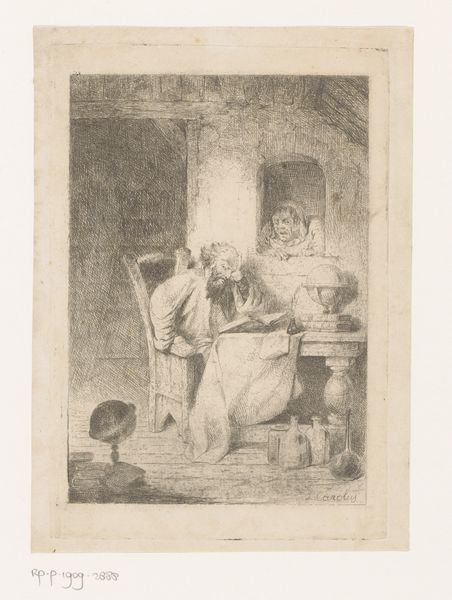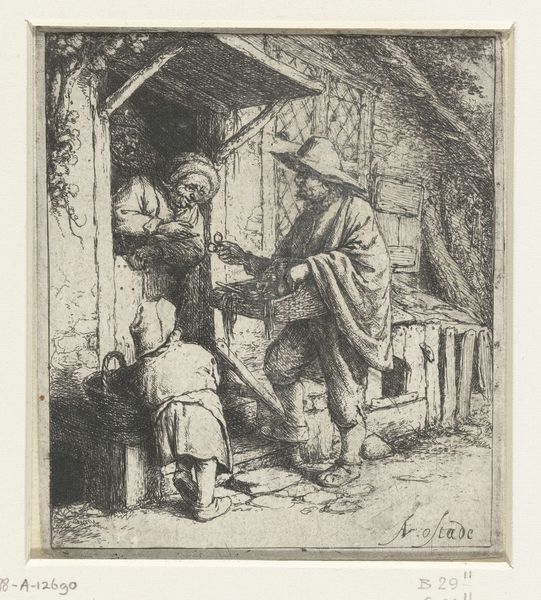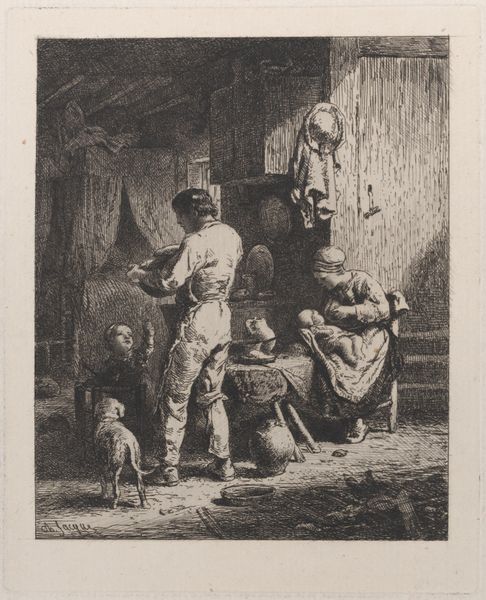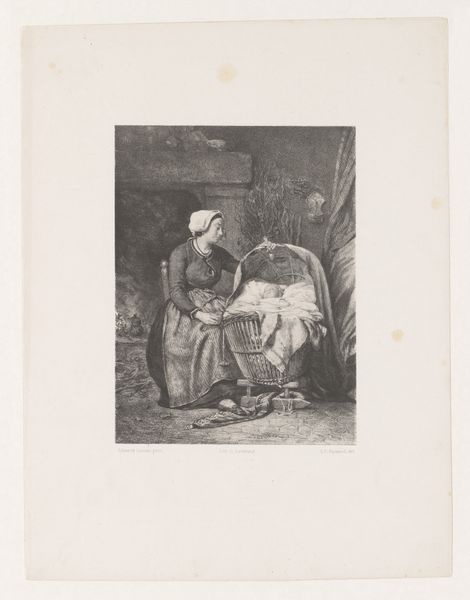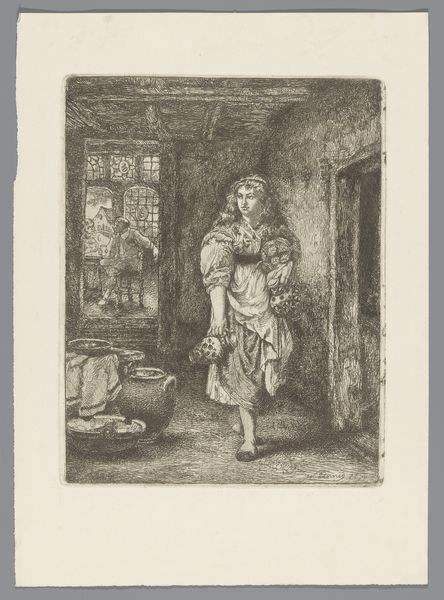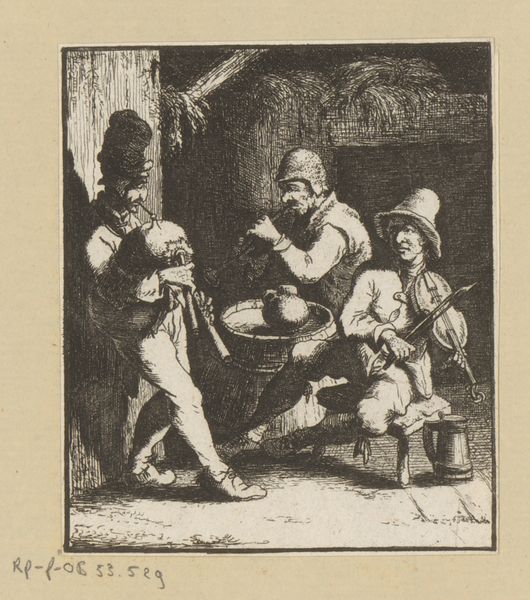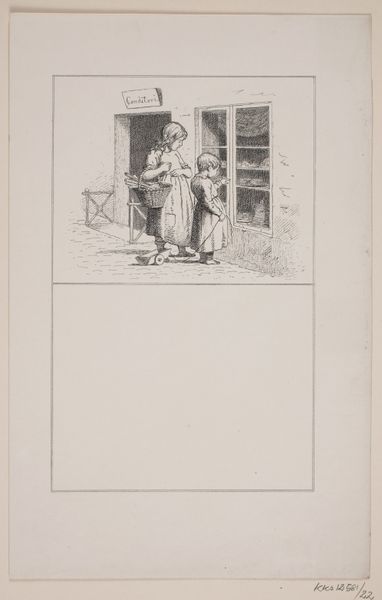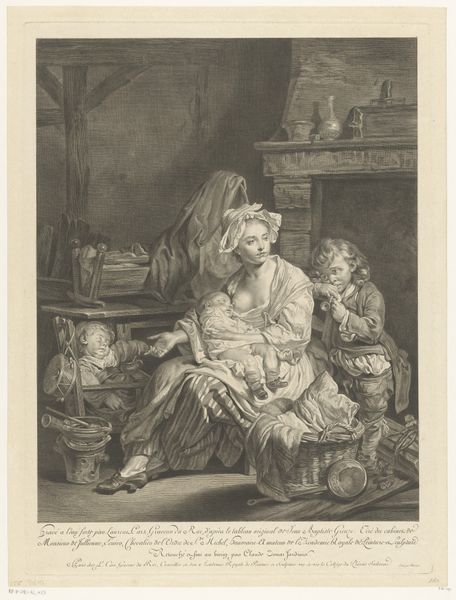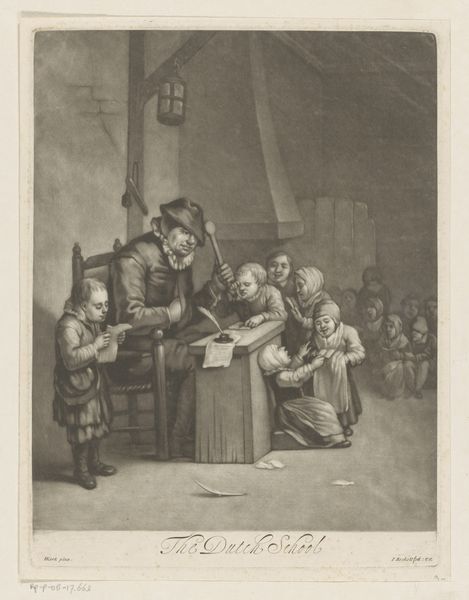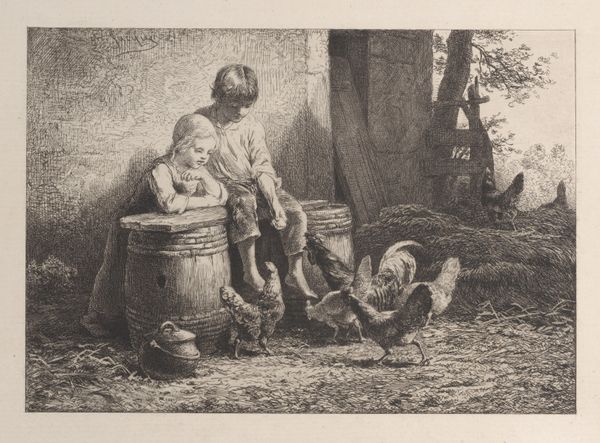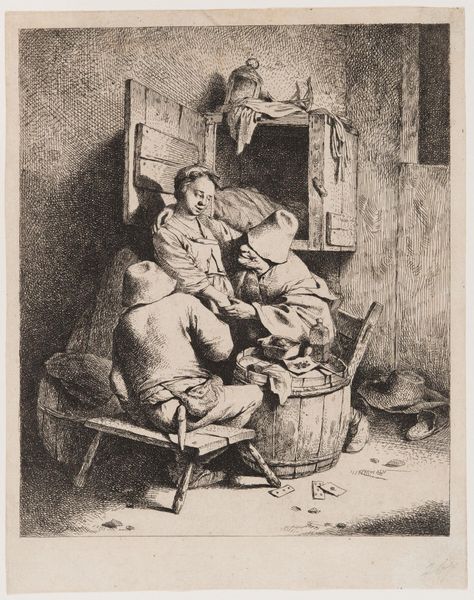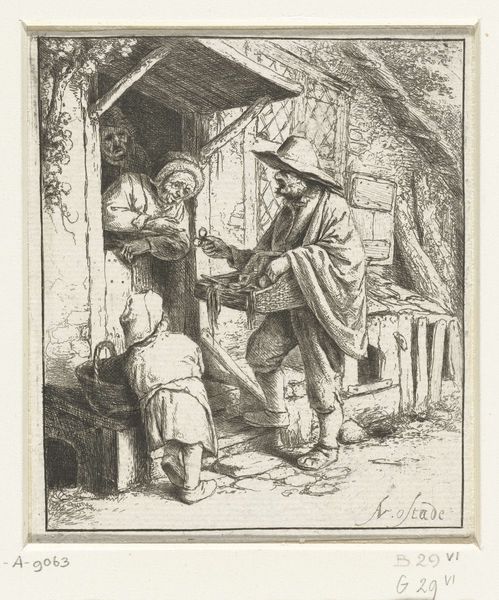
print, engraving
#
portrait
#
mother
# print
#
pencil drawing
#
19th century
#
genre-painting
#
engraving
#
realism
Dimensions: height 240 mm, width 198 mm
Copyright: Rijks Museum: Open Domain
Editor: Here we have Théoore Gérard's "Familietafereel met een echtpaar, een baby en een jong meisje," or "Family Scene with a Couple, a Baby, and a Young Girl," created in 1871. It’s an engraving. There's a tender domesticity to the image, but it feels…staged, somehow. How do you interpret this work, considering its time? Curator: It's crucial to consider the role of genre paintings and portraiture in 19th-century Europe. This wasn't just about depicting a family; it was about constructing an image of the ideal family, deeply intertwined with societal expectations and class. What do you notice about how each figure is positioned, their gazes? Editor: Well, the father is standing, looking down, while the mother is seated, holding the baby. The older child is near the fire. It feels like…traditional gender roles being reinforced. Curator: Precisely. The man's gaze and stance suggest authority, while the woman is framed by her domestic role as a mother. Consider also how access to art and its representation further solidified class structures. Who was this image *for*? How does it serve to perpetuate certain norms? Editor: I see what you mean. It's not just a picture; it's a statement about how a family should be. And being a print, it suggests wider dissemination than an unique painting. Curator: Exactly. The print medium made it accessible, shaping popular perceptions. This resonates even today. Think about how these historical portrayals have impacted the ongoing dialogue on gender, labor, and family structures. Editor: So, it’s more than just a snapshot of a family; it’s a loaded image reflecting societal values and power structures. That’s… sobering. Curator: It invites us to deconstruct those historical constructs and encourages an awareness of whose stories were told and whose were marginalized. I appreciate the new lens you bring to considering family dynamics and artistic intentions.
Comments
No comments
Be the first to comment and join the conversation on the ultimate creative platform.
